Goji berries have gained popularity in recent years due to their nutritional benefits and unique taste.
As you consider adding goji berry plants to your home garden, you might be wondering if these plants are invasive and what implications they may have on your local ecosystem.
For responsible goji berry cultivation in your garden, it's important to know local rules and environmental practices.
This way, you can enjoy the benefits of your goji berry plants without compromising the health of your garden and surrounding ecosystem.
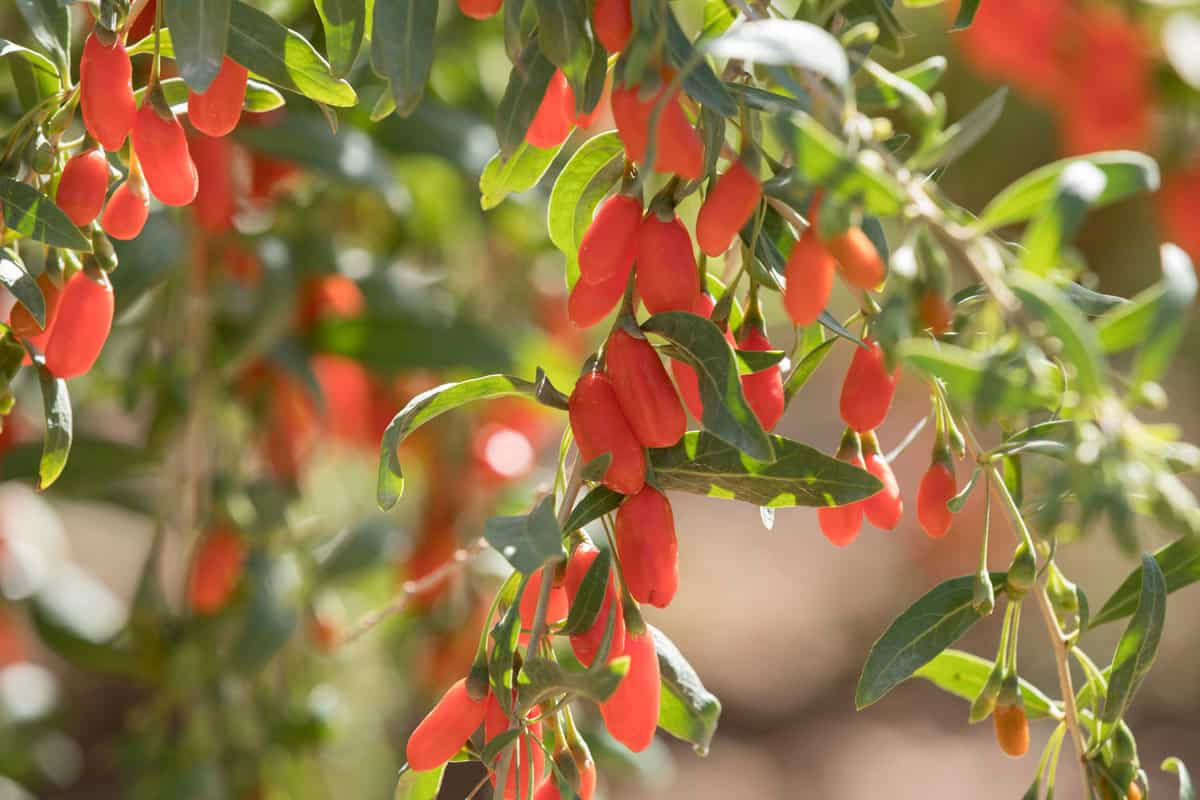
What Are Goji Berries?
Goji berries, also known as wolfberries, are the fruit of two species of shrubby bushes, Lycium chinense and Lycium barbarum, primarily found in northwest China.
These deciduous or evergreen shrubs, also known as box thorns, hail from the nightshade family, which includes about 70 to 80 species, and primarily thrive in arid and semi-arid climates.
Goji berries are small, red to purple in color, and packed with nutrients. These plants tend to have thorny stems, small flowers, and red to purple or yellow berries.
These berries are commonly used in Chinese cuisine, where they are added to soups or consumed as herbal tea.
They are quite similar to raisins in taste and texture and enjoyed as a snack.

Despite their small size, goji berries are believed to have several health benefits.
In traditional Chinese medicine, they are claimed to possess "eye brightening" qualities.
As you can see, goji berries are more than just a colorful addition to your home garden. They bring a rich cultural and medicinal history along with their vibrant hue.
If you decide to grow these plants, be sure to take advantage of their potential health benefits while enjoying their unique flavor.
Invasiveness of Goji Berry Plants
Goji berry plants can naturally reach up to 12 feet tall, but cultivated goji plants are often pruned to be around 3 to 6 feet tall for easier harvesting.
Often they can become a problem by spreading too much in some areas. This is because wolfberries can start growing wherever their branches touch the ground.
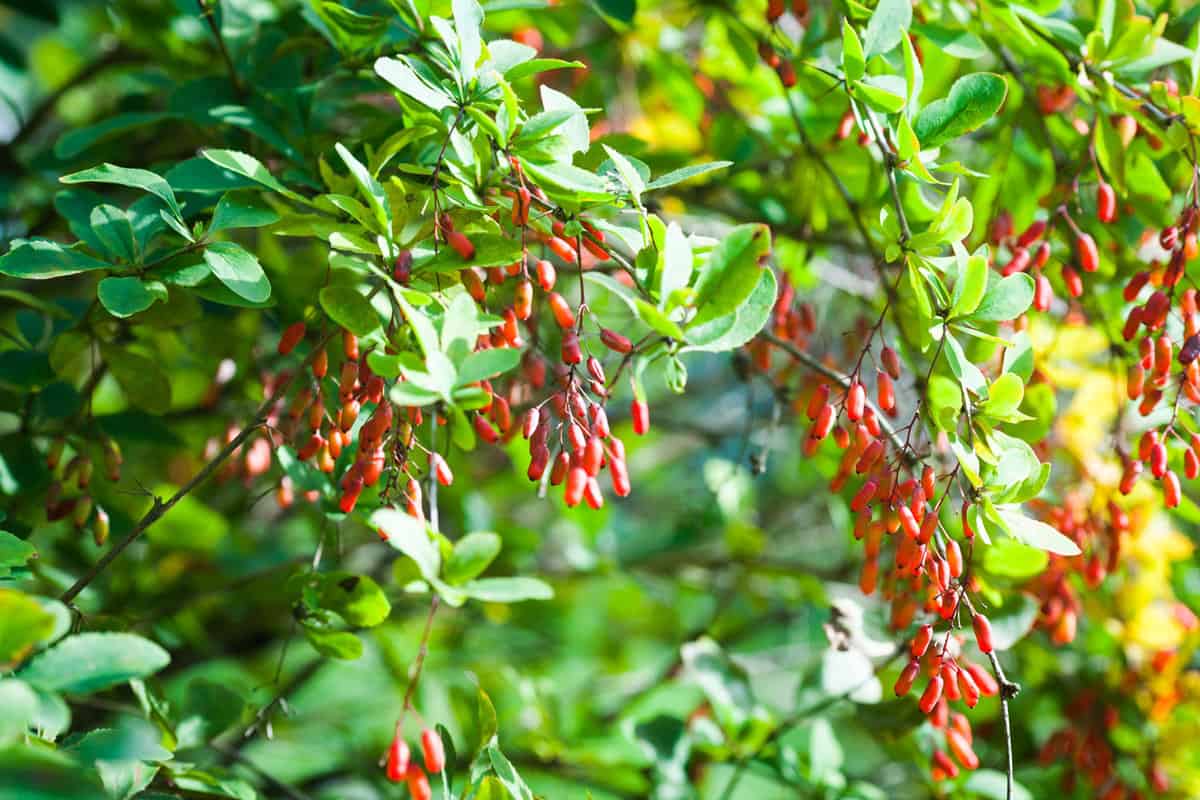
An article by Vern Nelson in The Oregonian (August 17, 2008) talks about this invasive tendency.
However, it was also suggested that using a 4 by 5-foot square support can help control them.
Also, Lyle's book also says that their deep roots can help stop soil from washing away.
To ensure the containment of your goji plants in your home garden, it's important to monitor their growth and prune them regularly.
Also, avoid planting them near natural areas where they could potentially affect native plants if they were to spread.
Watch this video for some great tips:
Impact on Your Home Garden
When planting goji berry plants in your home garden, it is essential to select an area with well-draining soil and ample sunlight.
Goji berries prefer full sun and can grow in a variety of soil types, including clay, loam, and sandy soils.
Spacing is also crucial; ensure that you leave about 4 to 5 feet between plants to allow for adequate airflow and growth.
Caring for Goji Berries
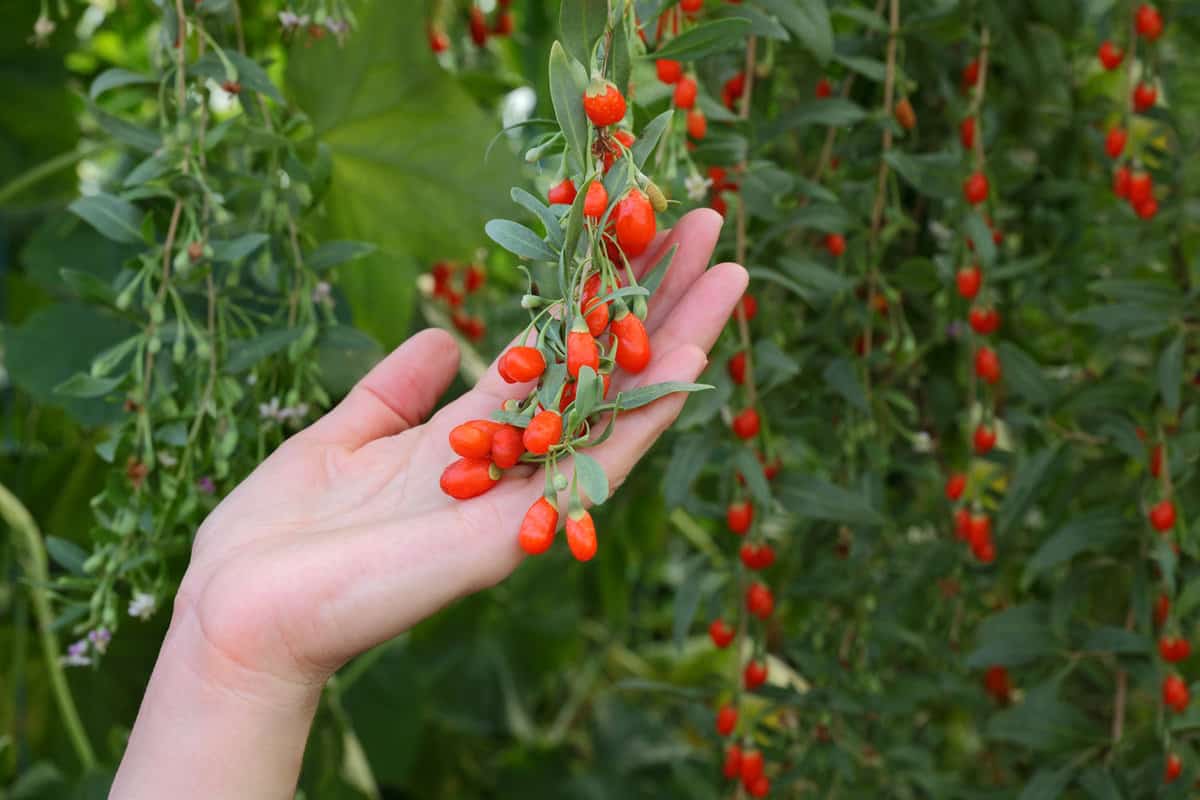
To maintain healthy goji berry plants, follow a proper fertilization routine.
According to Utah State University Extension, the recommended fertilizer rate for goji berries in the U.S. is 4 to 5 tablespoons of 16-16-16 per 10 square feet per year. Reduce this rate in fertile soils to avoid overfertilizing.
Check out this 16-16-16 all purpose fertilizer on Amazon.
Split the total fertilizer amount into three applications for the year: at bud break, flowering, and as the fruit begins to ripen.
Goji berry plants require regular pruning to maintain their shape and encourage new growth.
Prune in late winter or early spring, removing dead, damaged, or overcrowded branches.
Make sure to wear gloves and long sleeves, as the plant's spines can be sharp.
Be mindful of the plants' watering needs, as they are drought-tolerant but may require additional water during dry periods to ensure healthy growth and fruit production.
Potential Threats to Other Plants

As non-native species, goji berries have the potential to become invasive and displace native plants in some regions.
However, this concern may vary depending on your location and the specific variety of goji berry you are growing.
To minimize the risk of invasiveness, consider implementing good garden practices such as:
1. Regular Monitoring
Keep an eye on your goji berry plants and watch for signs of excessive growth, as this may indicate they are spreading beyond the desired area.
2. Pruning and Containing

Prune and remove unwanted growth promptly; this will help keep the plants under control and prevent them from spreading to other parts of your garden or neighboring natural habitats.
3. Selecting Non-invasive Varieties
Research and choose goji berry varieties that are less likely to become invasive in your region.
Remember, it is always essential to do thorough research and consult with local experts on the best practices for growing goji berries in your area, to ensure a positive impact on both your garden and the environment.
Management and Control: Using Natural Predators
Introducing natural predators can be an effective way to control goji berry plant growth.
Encourage birds, insects, and other animals that can help keep the plant in check.
However, it's crucial to ensure that these natural predators won't cause harm to your other plants or become invasive themselves.
How Much Space Does a Goji Berry Plant Need?
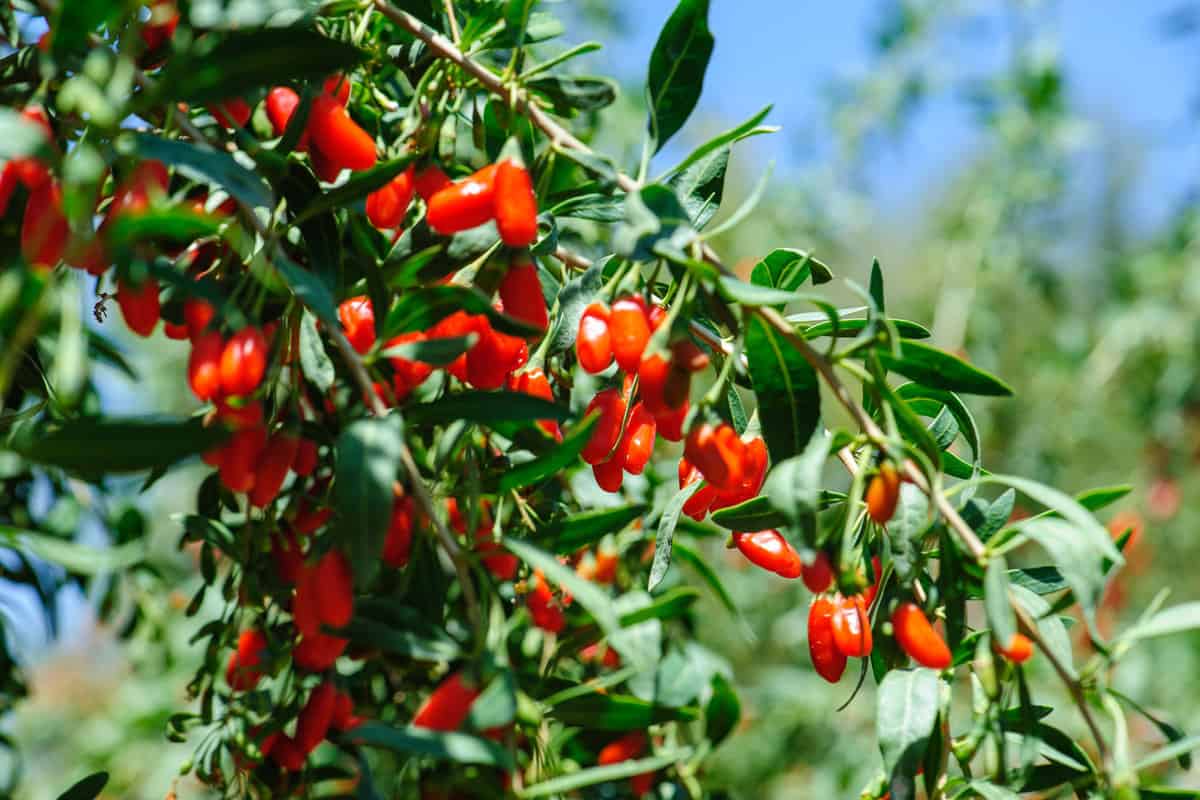
Goji berry plants can be grown both in-ground and in containers, making them a versatile addition to your home garden.
In general, a goji berry plant requires 3 to 5 feet of spacing between rows and 6 to 8 feet spacing between in-row plants.
This allows ample room for growth and ensures adequate airflow around the plants.
If you plan to grow goji berries in containers, make sure to choose a pot that is at least 5 gallons in size.
This will accommodate their deep taproot system and control the height of the bush.

A container-grown goji berry plant will generally have a smaller growth habit compared to one planted in the ground.
In the garden, goji plants can grow as high as 10 feet tall and 4 to 8 feet wide.
However, the size may vary depending on the cultivar and growing conditions.
It's essential to provide adequate space for your goji berry plants to grow and ensure proper air circulation, especially in humid climates, to reduce the risk of potential diseases.
Weighing the Benefits and Risks of Goji Berry Plants
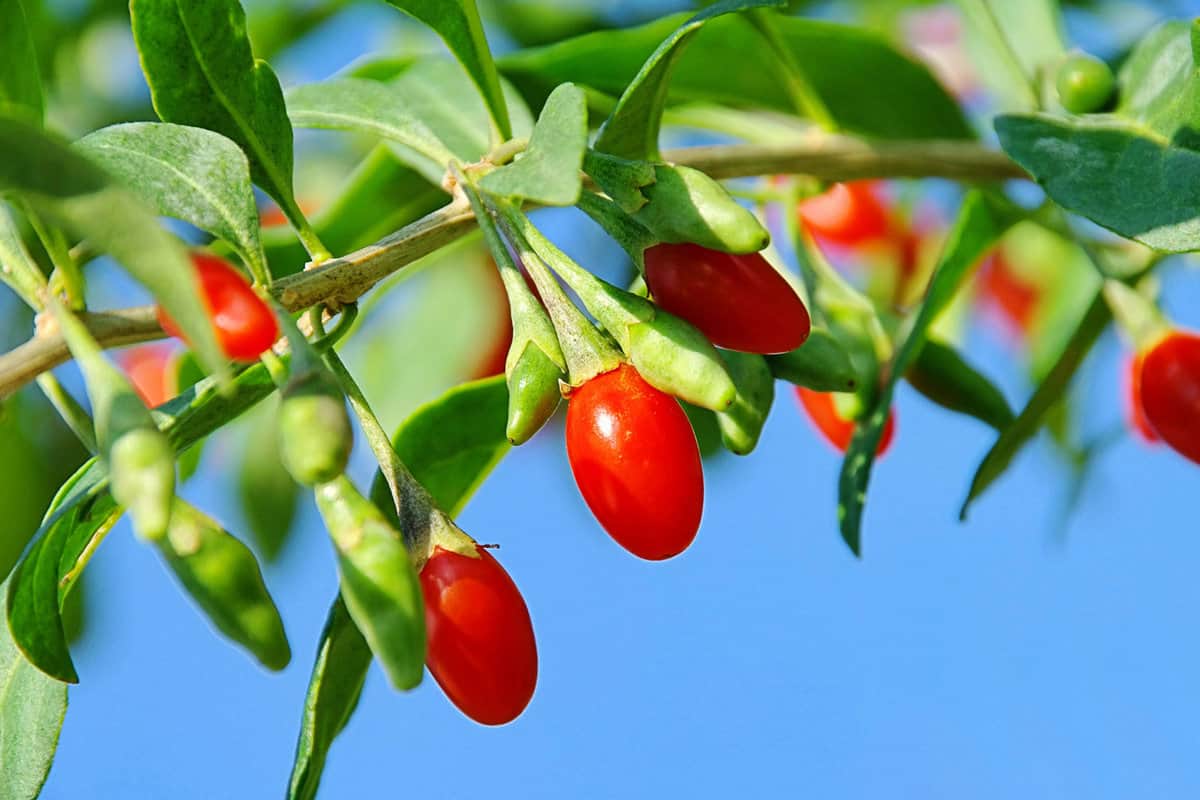
Goji berry plants can be a wonderful addition to your home garden, offering numerous health benefits from their nutrient-packed fruits.
The primary concern with goji berry plants is that they can be invasive or aggressive growers in certain areas.
Their stems can take root wherever they touch the ground, leading to rapid spreading.
To avoid this issue, you may want to consider containing them in a defined structure or growing them in raised beds.
While goji berry plants are a great nutraceutical "superfruit" addition to any garden, it is essential to keep their invasive tendencies in check.
By providing proper care and containment, you can enjoy the benefits of these plants without unwanted spreading.
Read here for more goji berry info:
Goji Berry Plant Not Fruiting – Don’t Panic, Here’s What You Can Do

